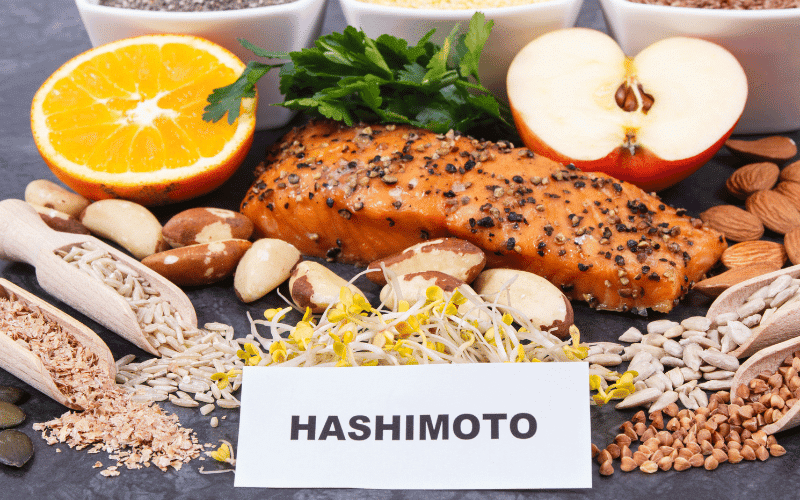Tip 5. Fuel to Thrive: Navigating Nutrition with Hashimoto’s Disease

One of the fundamental pillars of managing Hashimoto’s disease is nutrition. What you eat can significantly impact your symptoms and your overall health. With Hashimoto’s, certain foods can be your allies, while others might intensify your symptoms. Let’s navigate the path of nutrition with Hashimoto’s together.
It’s no secret that a balanced diet is a key to good health. Your plate should be filled with a variety of colorful fruits and vegetables, lean proteins, whole grains, and healthy fats. These foods provide a wealth of nutrients, support a healthy weight, and boost your immune function.
While a balanced diet is important, people with Hashimoto’s might benefit from paying special attention to certain nutrients. Selenium and Zinc, for instance, are essential for thyroid function. Foods rich in these nutrients include seafood, meat, seeds, and nuts.
Interestingly, the role of gluten in Hashimoto’s disease is a hot topic among experts. Some studies suggest that a gluten-free diet can help manage symptoms and slow disease progression. If you’re considering going gluten-free, it’s wise to consult with a dietitian to ensure your diet still provides all the necessary nutrients.
With Hashimoto’s, it’s also critical to be mindful of goitrogenic foods. These include certain vegetables like cabbage, cauliflower, and broccoli, that when consumed raw, may interfere with thyroid function. However, cooking these vegetables usually deactivates their goitrogenic compounds. (5)